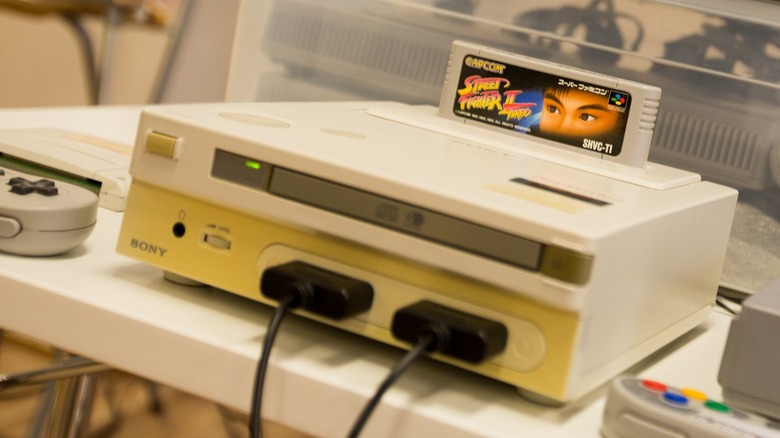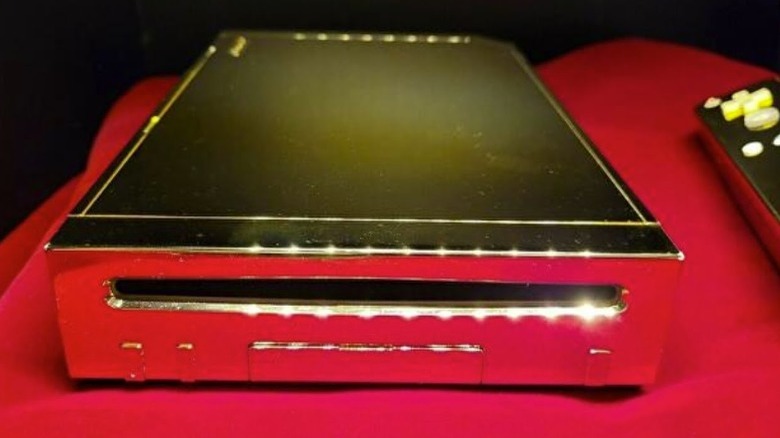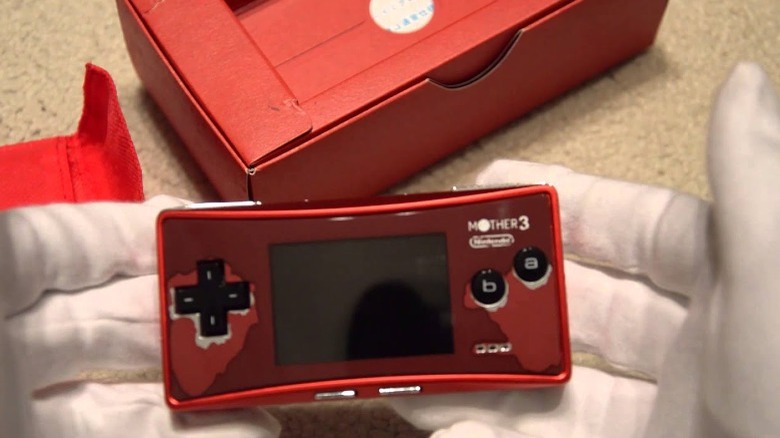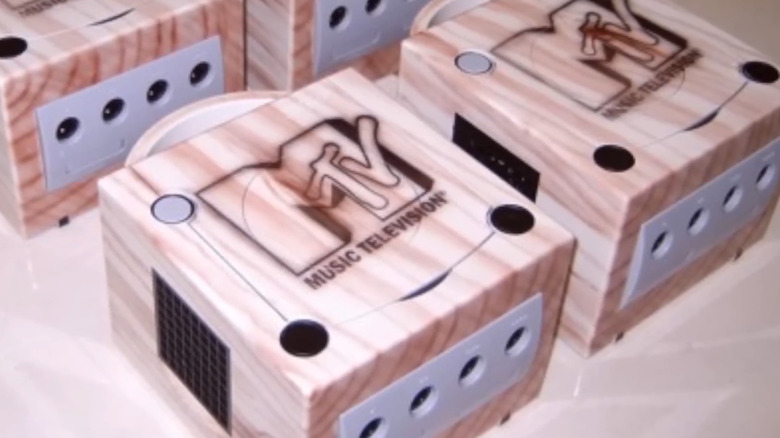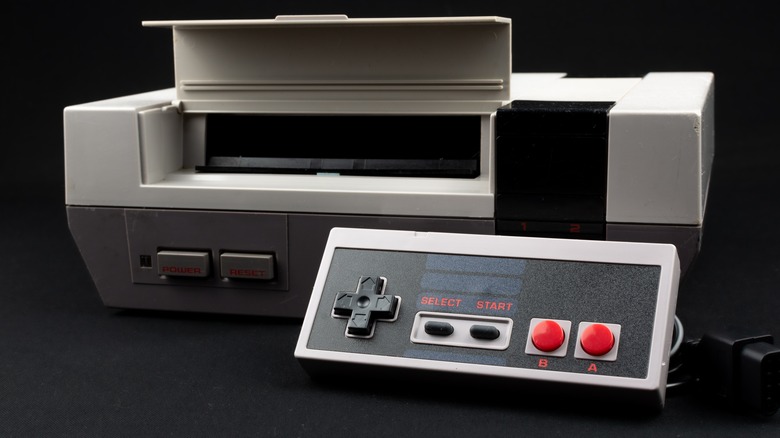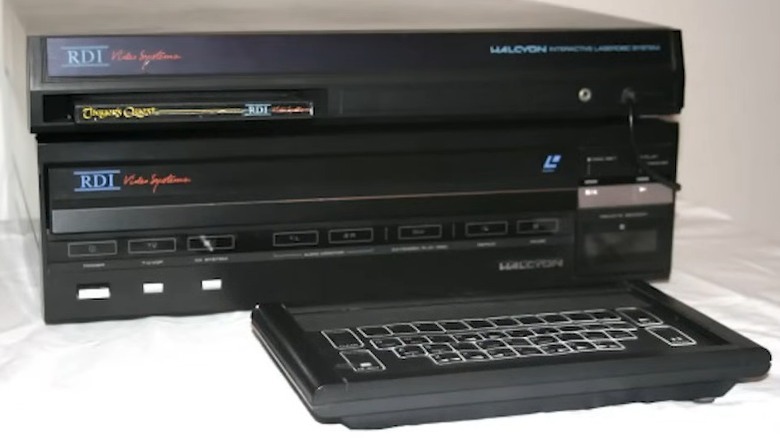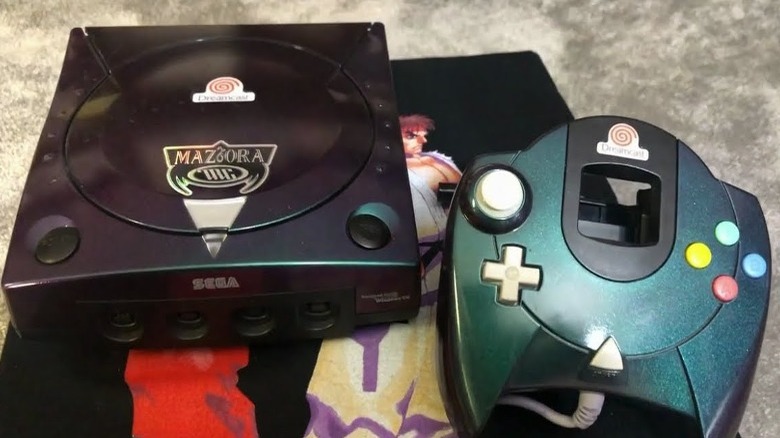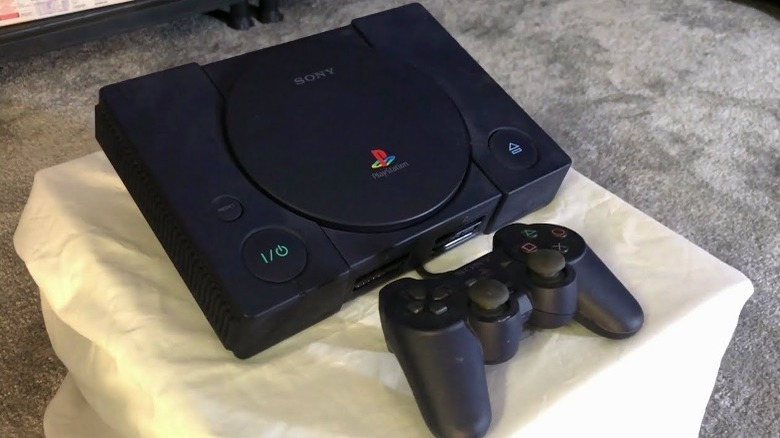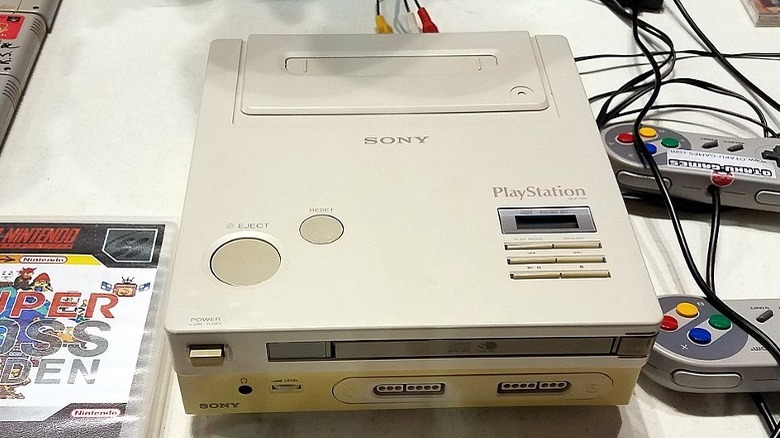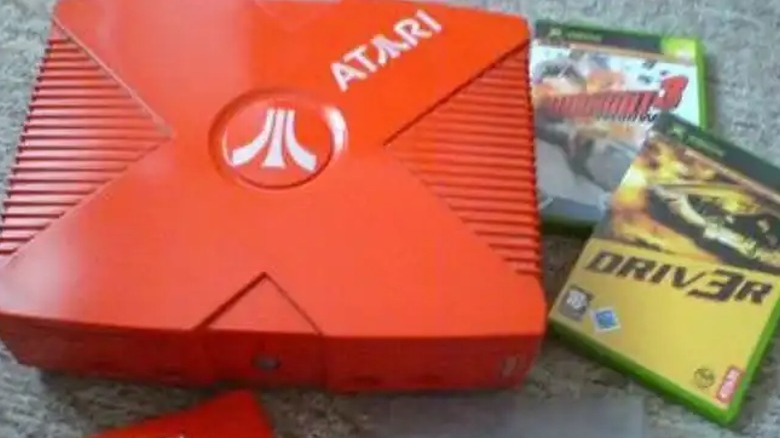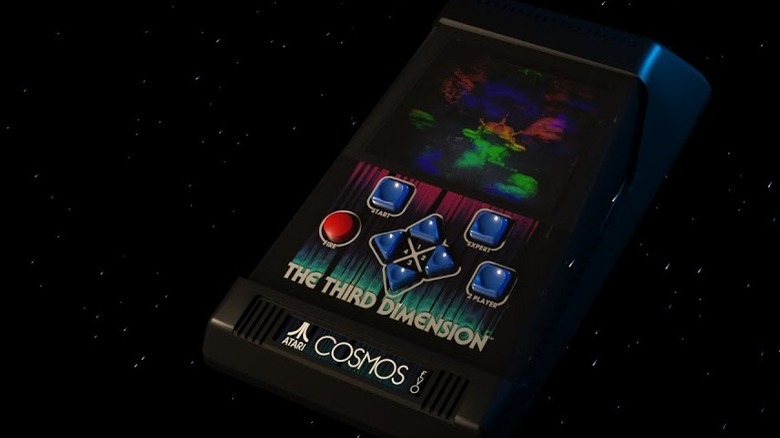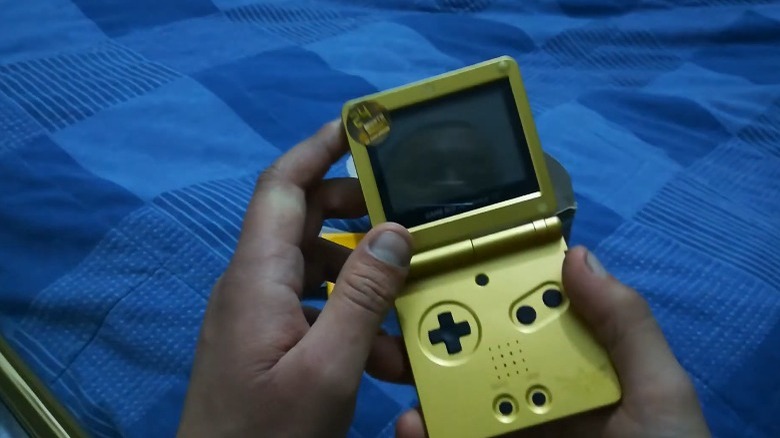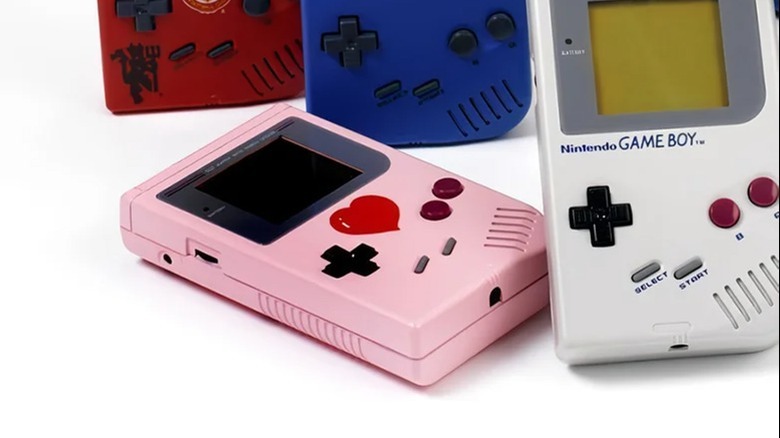12 Valuable Retro (And Rare) Video Game Consoles Every Collector Should Know About
Compared to other forms of entertainment, the gaming industry is still quite young. After all, the first video games didn't emerge until the 1970s. That also means there is more than half a century of history to the medium and plenty of rare collector's items that gamers would love to get their hands on. While there are valuable video games and collectable peripherals, it is the consoles themselves that often grab the most attention and are most sought after.
Over the years, companies such as Nintendo, Sony, Sega, and Microsoft have all produced consoles that are not exactly easy to come by. Some might have been manufactured for a special event or to commemorate an anniversary, while others are prototypes that were never meant to be seen by the public. There are even some consoles that were specifically designed to be scarce.
Regardless of how and why they were created, these retro video game consoles are all pieces that would sit well in any video game museum and have pride of place in anyone's collection. A few of them might even be worth more than you realize today.
[Featured image by Mats Lindh via Wikimedia Commons | Cropped and scaled | CC BY 2.0]
Nintendo Wii One-of-a-Kind Gold-Plated Console Bundle
If you think of an expensive console, the Nintendo Wii is unlikely to come to mind. The system cost just $250 when it first launched, significantly less than both the PlayStation 3 and Xbox 360. A few years later, it could be found even cheaper, and with over 100 million units sold, the Nintendo Wii was not exactly hard to find in the wild. As a result, could pick one up second-hand for next to nothing. However, there was one particular version of this console that was incredibly rare and also very expensive.
This Nintendo Wii is one of the most expensive game consoles ever created. Made by a third-party luxury firm working with THQ, it was a gold-plated model that came with a matching Wii Remote. Intended to be sent as a gift to Queen Elizabeth II as part of a marketing stunt, it ended up being sent back to the publisher when Buckingham Palace staff rejected it.
The gold-plated Wii was purchased with the rest of THQ's hardware stock when the company went bankrupt. It was then put up for sale with a price tag of $300,000, with estimated valuations suggesting it could be worth up to $1 million. Specialist auction site Goldin reveals that it eventually sold for just $36,000, far below the asking price but still a lot of money for a Nintendo Wii.
Game Boy Micro Mother 3 Console
Although Nintendo found plenty of success with its home consoles, such as the NES and SNES, it cemented its place in gaming history with the launch of the Game Boy. The handheld gaming system first hit store shelves in 1989 and subsequently went through a number of revisions on its way to selling hundreds of millions of units. The huge popularity of the original Game Boy led to a number of new models. These ranged from the Game Boy Color to the Game Boy Advance and even the Game Boy Micro.
It is the Game Boy Micro that concerns us here. Released at the same time as the Game Boy Advance SP in 2005, the Game Boy Micro acted similar to a standard Game Boy but was much smaller. It was also not backward compatible, only able to play games on Game Boy Advance cartridges. With a backlit screen that had adjustable brightness, two face buttons, and a D-pad, it was a rather simplistic console that was relatively short-lived in the grand scheme of things.
Despite all that, Nintendo released a number of special editions of the Game Boy Micro. One of these was the Mother 3 Console, intended to celebrate the eponymous game. Only between 5,000 and 10,000 of these were manufactured and released exclusively in Japan, with the system worth up to $1,500.
MTV GameCube
The GameCube was not as successful as most of Nintendo's hardware releases. The 2001 console faced stiff competition from both the PlayStation and Xbox. This led to disappointing sales and a dry spell for the Japanese company that wouldn't be remedied until the release of the Nintendo Wii in 2006. Of course, that didn't mean that Nintendo didn't try to market the GameCube as much as possible and try to make the system more successful.
One way that Nintendo attempted this was through a collaboration with MTV. In association with the television network, the company created a limited run of limited edition GameCube consoles that each had their own unique design. The aim was that these GameCube systems would be given away as prizes as part of the competition throughout the holiday season.
A total of 29 GameCubes were created for the competitions. This puts them among the rarest Nintendo consoles ever made and also makes them very valuable. Two of the models featured artwork from fashion designers Paul Smith and Tom Ford, while another had a distinctive camouflage pattern. Exactly how much they are worth is unknown, as there's never been a confirmed sale.
NES Nintendo World Championship 1990 Console
Early Nintendo hardware can fetch a high price, especially if the products are a one-off release, part of a special event, or a prototype that was intended for private use. Take this "The Legend of Zelda" prototype cartridge , which comes with a hefty price tag, as an example. As a result, it shouldn't be a huge surprise that a NES Nintendo World Championship 1990 console is among the most sought after pieces of hardware from the Japanese company.
The hardware itself was created for use in a competition known as the Nintendo World Championships. These were contests held infrequently throughout the 1990s, and gamers across the United States competed to find the best player. Touring college campuses around the country, the first Nintendo World Championship saw players compete using customized cartridges that contained specially modified versions of the games "Super Mario Bros.," "Rad Racer," and "Tetris."
These cartridges are rare and worth a lot of money, but they were also played on customized versions of the NES console. Almost identical to the console that older gamers will be familiar with, it came with a modem port to provide the organizers with a way of collecting data and determining high scores. Up to 50 may have been created for the tournament. However, only a small number survive to this day as Nintendo destroyed many after the competition ended.
RDI Halcyon
RDI Video Systems is probably not a name that many modern gamers would know of. That's largely because the company went bankrupt in 1985 and had only been in operation for three years before that happened. However, it was responsible for developing some popular LaserDisc games during its short life, including "Dragon's Lair" and "Space Age." These played more like interactive movies than video games but found some success thanks to the extra detail and impressive animation.
After some success with software, RDI leader Rick Dyer decided that the company should work on a new piece of hardware. This would allow him to work on a game concept known as "Shadoan." given the codename The Dream Machine, the Halcyon was a unique piece of hardware, unlike other consoles. It was initially intended to use a CED playback system but switched to LaserDisc late on in development.
Expected to cost $2,500 when it launched, the Halcyon took its name from HAL in the film "2001: A Space Odyssey" as it also supported voice controls and a speech synthesizer that had a vocabulary of more than 200 words. Poor reception in test markets and a massively expensive price meant that pre-orders were low, prompting investors to pull the plug on the console and RDI. Only around two examples of the system that don't function exist, with even fewer surviving now.
Maziora Dreamcast
The Dreamcast effectively ended Sega's role as a console manufacturer. Going up against the GameCube, PlayStation 2, and Xbox, the Dreamcast failed to make an impact with customers and was quietly discontinued a few years after it launched. Exiting the console market in 2001 with the demise of the system, Sega transformed solely into a developer and publisher. Yet, within the three years that the Dreamcast was available, there were still plenty of modified versions of the console that were released.
One of those was the Maziora Dreamcast, a partnership with the paint brand of the same name and Taira Racing. Some 500 models were created, with 200 of them signed by Japanese racing driver Tadahiko Taira. What made this particular variation so unique is that it was coated in pearlescent paint, meaning that it would shimmer and change color depending on the lighting in the environment.
In addition to the console, those who either purchased or won the Maziora Dreamcast also got a controller with the same design, a keychain, and a booklet containing information and trivia about the racing team. As the console was exclusive to Japan, there have been very few public sightings or sales in the West, but this is still a valuable item for any Sega collectors.
PS1 10 Million Model
Despite only entering the console market in the mid-1990s, Sony has since gone on to dominate the industry and is only rivaled by Nintendo in terms of sheer numbers. The company's success in the world of gaming all started with the release of the original PlayStation 1 — often known simply as the PS1 — which competed with the Nintendo 64 and Sega Saturn.
Having sold over 100 million copies, the PS1 is one of the most successful consoles ever made. However, Sony was seemingly very happy to have the system sell just 10 million copies, with the company launching a special commemorative version of the console. Featuring a Midnight Blue colored case and controller, the promotional PlayStation was available in Europe, Japan, and the U.S., with 300 made available across all three regions.
Unlike other versions of the PS1, this special model was region-free, allowing those who owned it to play imported games from any region. It also included a special memory card with the same color as the console and controller. Boxed versions of the console have sold for as much as $20,000, making it one of the most valuable original PlayStation.
Nintendo PlayStation
The rarest PlayStation console in the world is not one that Sony created by themselves but rather a prototype that the company developed alongside Nintendo in the 1990s. Years before Sony introduced the world to the original PlayStation console, the company worked in collaboration with Nintendo to create a version of the SNES that would come with a CD-ROM. Dubbed the PlayStation, this machine would allow developers to create larger games, run software other than games, and allow more advanced technology to be used in titles.
The PlayStation hybrid console was effectively canceled when Nintendo backed out of the deal at the last moment. The company then decided to partner with Philips instead, producing the ill-fated Philips CD-i in addition to some terrible games based on Nintendo properties. The fact that Nintendo left it so late meant that Sony was able to develop prototypes of the PlayStation to demonstrate its abilities, although until relatively recently none had been shown to the public.
That changed in 2015 with the discovery of a functioning SNES-PlayStation hybrid. Able to play a variety of SNES games and even some CD-ROM titles with modifications to the console. The console may well be one-of-a-kind as it is unknown how many of these prototypes were built and survived. It eventually sold to Greg McLemore, the founder of Pets.com, for $360,000.
[Featured image by Paquitogio via Wikimedia Commons | Cropped and scaled | CC0]
The Atari Xbox
Although it doesn't have the same sort of brand recognition as the likes of PlayStation and Xbox, Atari was once one of the biggest names in the gaming industry. Founded in 1972, the company produced iconic games such as "Pong" and some of the earliest video game consoles, as well as various arcade releases. Facing stiff competition from manufacturers such as Nintendo and Sega, Atari came unless successful in the 1990s and effectively faded into obscurity by the turn of the 21st century. Considering all of that, Atari might seem like an odd choice for a limited edition Xbox console that was available in 2001 when Microsoft was attempting to compete with Sony's PlayStation.
The bold red and orange Xbox wasn't actually an officially licenced product that was intended for public release. Instead, the console was made as part of a competition at the Leipzig Game Convention in 2004. Only five were ever manufactured and, among them, only one came with an assortment of added extras, which included Atari-branded accessories such as a t-shirt and sweatband.
To win the prizes, attendees at the convention had to find five special pins hidden in the location that spelled out the word Atari and then be entered into a giveaway. The winners were then randomly selected from this group of entrants. Perhaps because of the fact that they are some of the rarest Xbox consoles ever made, very little else is known about them. There's no information about their current whereabouts and no confirmed auctions or sales that feature one of these Xbox consoles.
Atari Cosmos
Throughout the 1970s and early 1980s, Atari launched a number of video game systems, including the Atari 2600, an 8-Bit computer, and the Atari 5200. Of course, the company also released a wide array of arcade cabinets that featured their most popular games. One console that gamers never got a chance to play was the Atari Cosmos, a console worth up to $7,500 today.
Development for the console began in 1978, but the project was canceled in 1981 before it was put into production. Uniquely, the Cosmos would have included a holographic system in addition to a traditional 2D LED display. These holographic images would not affect gameplay but were rather designed to enhance the visuals of each title; only two holographic images would be available for each of the nine planned games.
The reason for the cancellation was likely due to poor reception when the Cosmos was shortest at expos in 1981. By this time, the project was advanced and there were several working versions of the hardware. Unfortunately, many of these were destroyed when Atari abandoned the console, and only a handful are known to exist today. Some non-functional prototypes have survived, though these are not as valuable.
Gold Minish Cap Game Boy Advance SP
When it launched in 2003, the Game Boy Advance SP became the very last premium model in the Game Boy line. Just a year later, Nintendo released the Nintendo DS, which had the folding screen design as its direct predecessor. This brought an end to a highly successful and popular series of handheld systems, although that legacy lives on in the hybrid nature of the Nintendo Switch.
Among the various Game Boy models, the Game Boy Advance SP stands out with the sheer number of limited edition and special variants in its catalogue. The rarest and most valuable of these is arguably the special edition gold Minish Cap Game Boy Advance SP. This is, itself, a variant of another limited edition version of the hardware that was released to coincide with "The Legend of Zelda: The Minish Cap." This model featured gold coloring and artwork from the game on the top of the case, with just 25,000 made available.
However, up to seven even rarer versions of the console were also created. Anyone who bought the above bundle in the U.K. entered into a giveaway. Randomly selected boxes contained a special gold card that could be redeemed for an actual gold-plated Game Boy Advance SP. This specific model came without the signature Triforce logo, and only two have surfaced in the intervening years.
Pink Heart Game Boy DMG
Unlike some of Nintendo's strange controllers, weird accessories, and experimental products, the original Game Boy isn't particularly rare. With Nintendo creating more than 100 million of them during a more than two-decade lifespan, they can be found in large numbers at garage sales, online auction sites like eBay, and any second-hand electronic stores. However, that is not the case with every single Game Boy model. There are some Game Boys that are actually worth a lot more than you realize.
That's certainly the case with that Pink Heart Game Boy DMG. Very little is known about this handheld console other than the fact that it was seemingly won in a British competition. It is colored entirely in pink with a red love heart symbol just underneath the screen.
There's no real indication about how many of these limited edition systems were made. However, the model does feature on a promotional Nintendo image, perhaps suggesting that this was not a one-off, though this is merely speculation. What we do know for certain is that it has the same model number as the origina. Game Boy: DMG-01.
